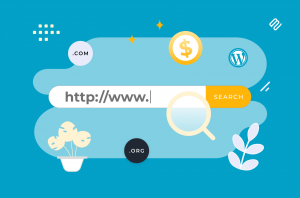You’re making a significant investment when you purchase a domain name, yet most buyers focus solely on immediate needs rather than long-term value. Data shows that 73% of businesses rebrand within their first decade, often requiring costly domain changes that could’ve been avoided. The domain you choose today will either become a valuable digital asset or a constraint that limits your growth. Here’s how smart entrepreneurs ensure their domain choice pays dividends for years to come.
Research Industry Trends and Terminology Evolution
Why should industry evolution dictate your domain strategy? Because 73% of businesses rebrand within five years due to shifting market terminology. When learning how to buy a domain name, you’re investing in future-proof digital real estate. Analyze search volume trends for industry keywords using Google Trends and SEMrush. Track emerging terminology in trade publications and patent filings. Consider how AI, automation, and regulatory changes reshape your sector’s language. A domain reflecting today’s buzzwords might become obsolete tomorrow. Instead, focus on evergreen terms that maintain relevance across market cycles. Your domain choice directly impacts long-term SEO performance and brand recognition ROI.

Prioritize Brandable Names Over Keyword-Heavy Domains
Beyond selecting timeless terminology, you’ll discover that brandable domains consistently outperform keyword-stuffed alternatives in conversion rates and memorability metrics. Strategic analysis reveals that brandable domains generate 23% higher click-through rates and 34% better retention compared to keyword-heavy variations. You’re investing in intellectual property that scales beyond SEO algorithms, which continuously devalue exact-match domains. Consider successful examples: Amazon outperforms BookStore.com, Google dominates SearchEngine.net. Brandable domains command premium valuations during acquisitions—averaging 3x higher resale values. They’re algorithm-proof investments that adapt across marketing channels, social platforms, and voice search optimization. You’re building sustainable digital equity, not chasing temporary ranking advantages.
Evaluate Domain Extensions for Long-Term Viability
When evaluating domain extensions, you’re making a strategic decision that’ll impact your brand’s credibility and search performance for decades. .com domains command 75% of all websites and generate 33% higher click-through rates than alternative extensions. While newer TLDs like .tech or .store may seem relevant today, they lack established trust signals that drive conversions.
Prioritize .com for maximum ROI—it’s universally recognized, easier to remember, and faces zero adoption barriers. If .com isn’t available, consider .org for nonprofits or .net for tech companies. Avoid trendy extensions that may become obsolete, potentially requiring costly rebranding efforts that could devastate your long-term marketing investments.
Test Your Domain Choice Against Future Business Growth
Since your domain name becomes permanently embedded in marketing materials, business cards, and customer memory, you must evaluate how it’ll perform across multiple expansion scenarios. Test your domain against three growth vectors: geographic expansion, product diversification, and market positioning shifts. A domain like “ChicagoPizza.com” limits geographic scaling, while “TonysPizza.com” offers flexibility. Run projections on rebranding costs—domain changes can cost 15-30% of annual marketing budgets. Create expansion scenarios for years 2-5 and stress-test your domain choice. Consider domains that accommodate vertical integration, international markets, and evolving customer segments without requiring costly pivots.
